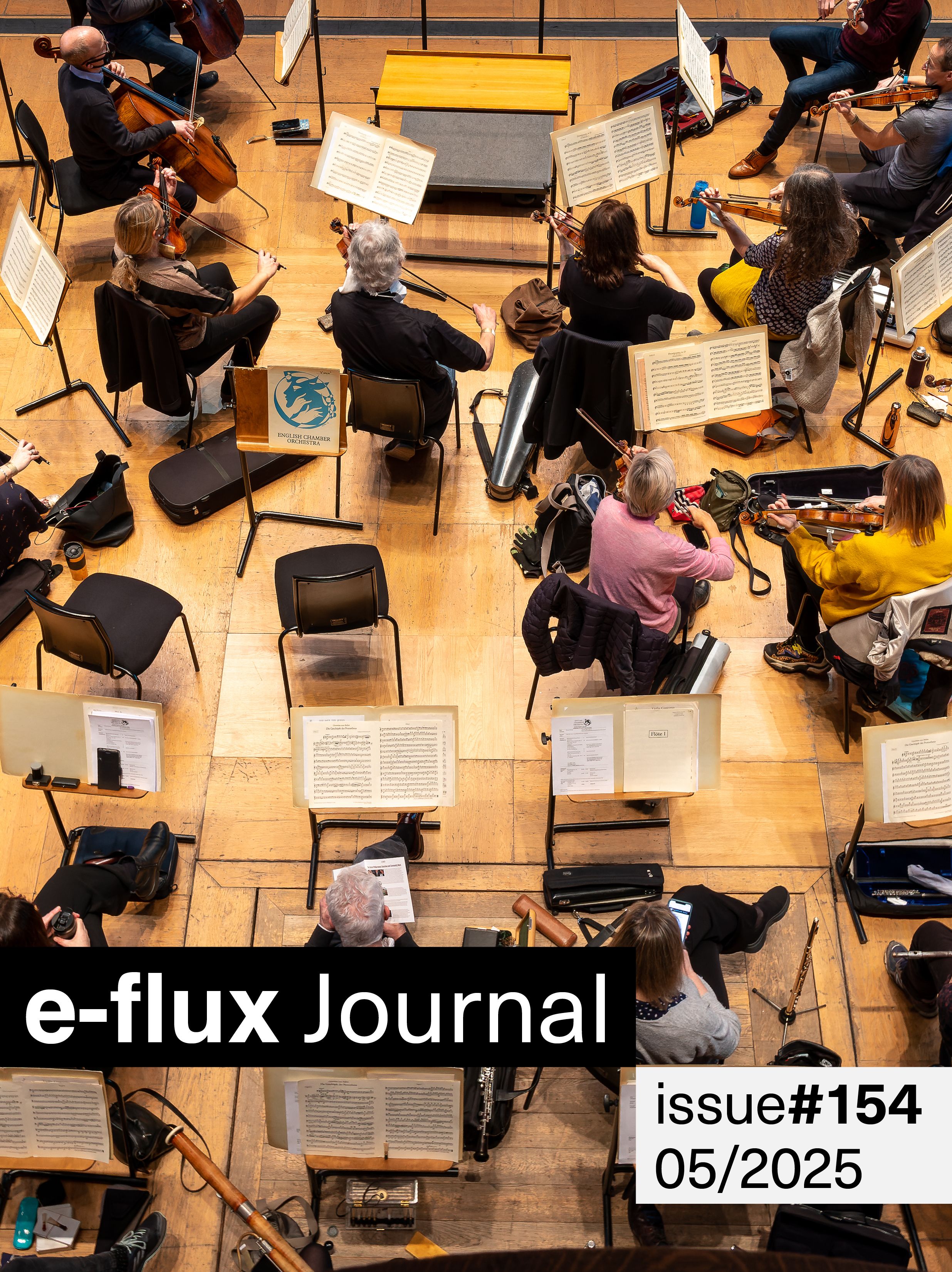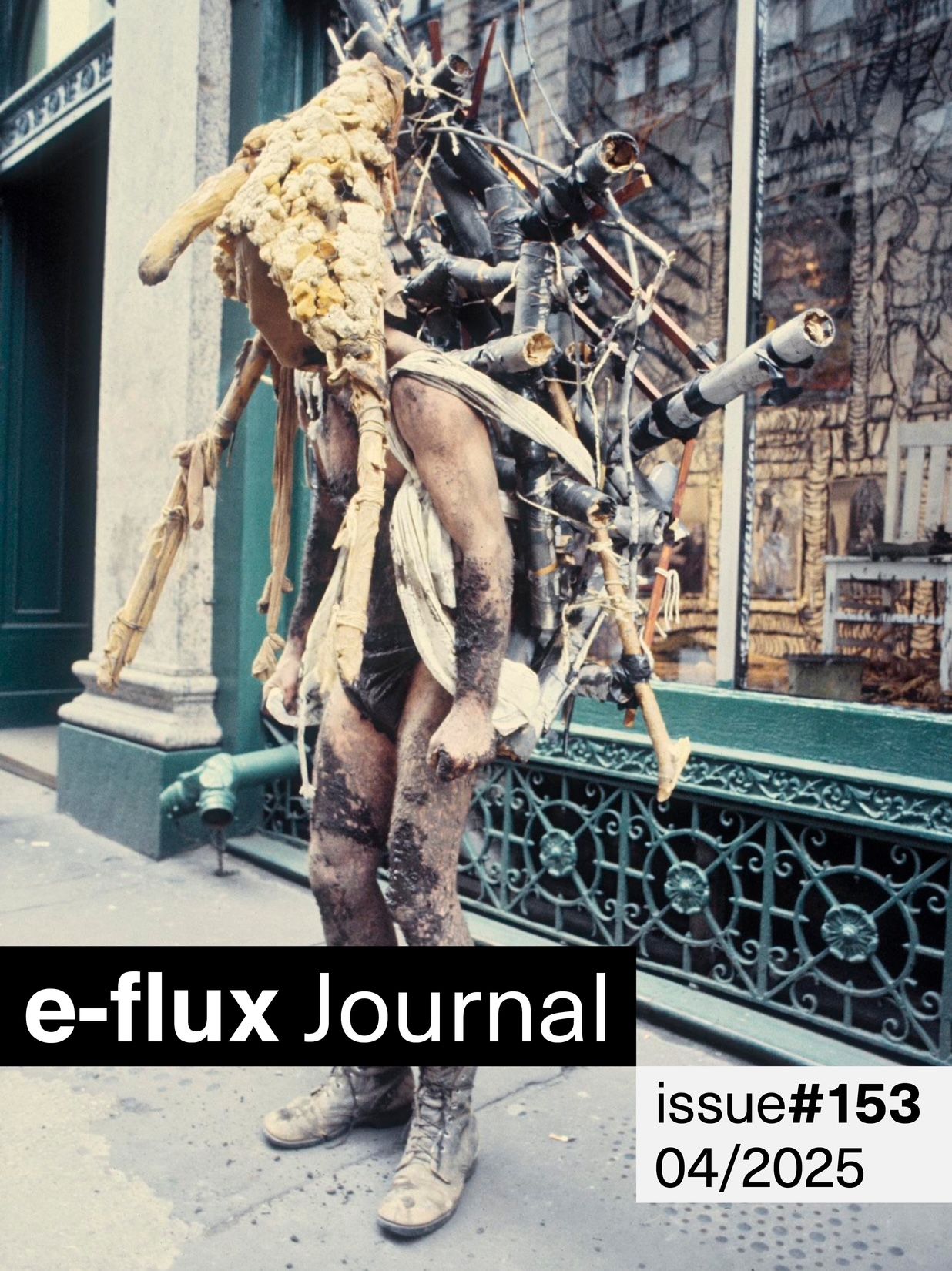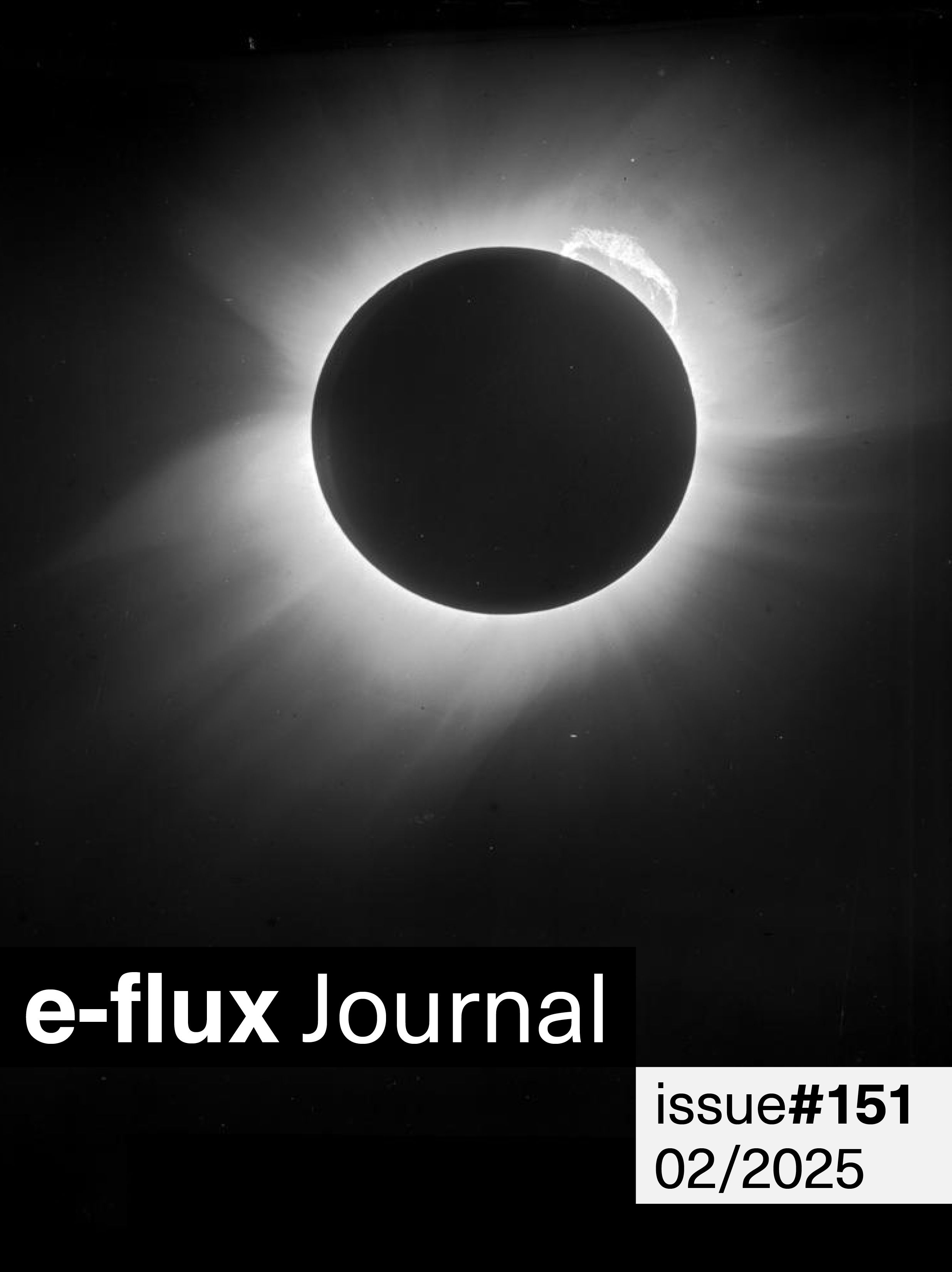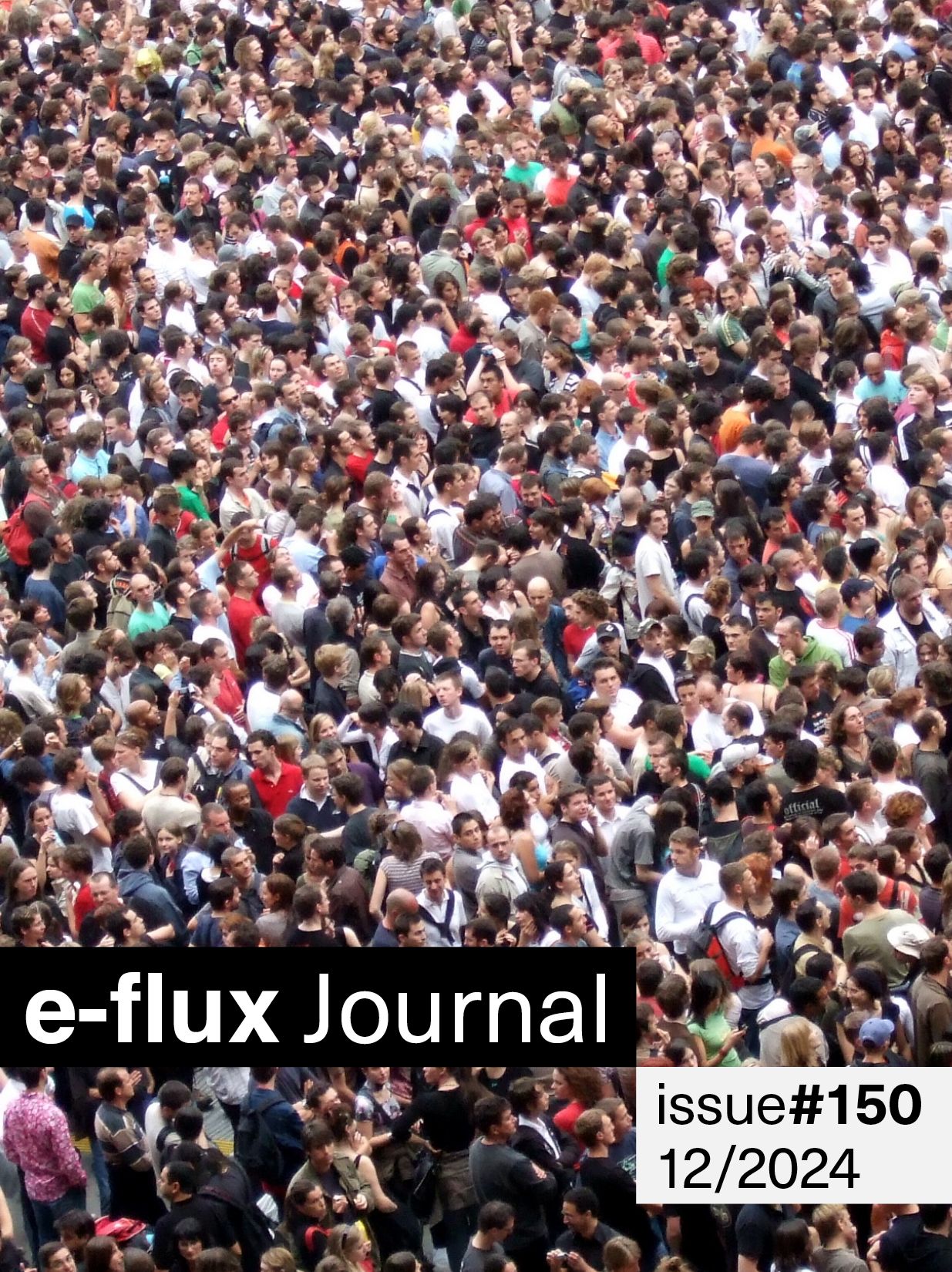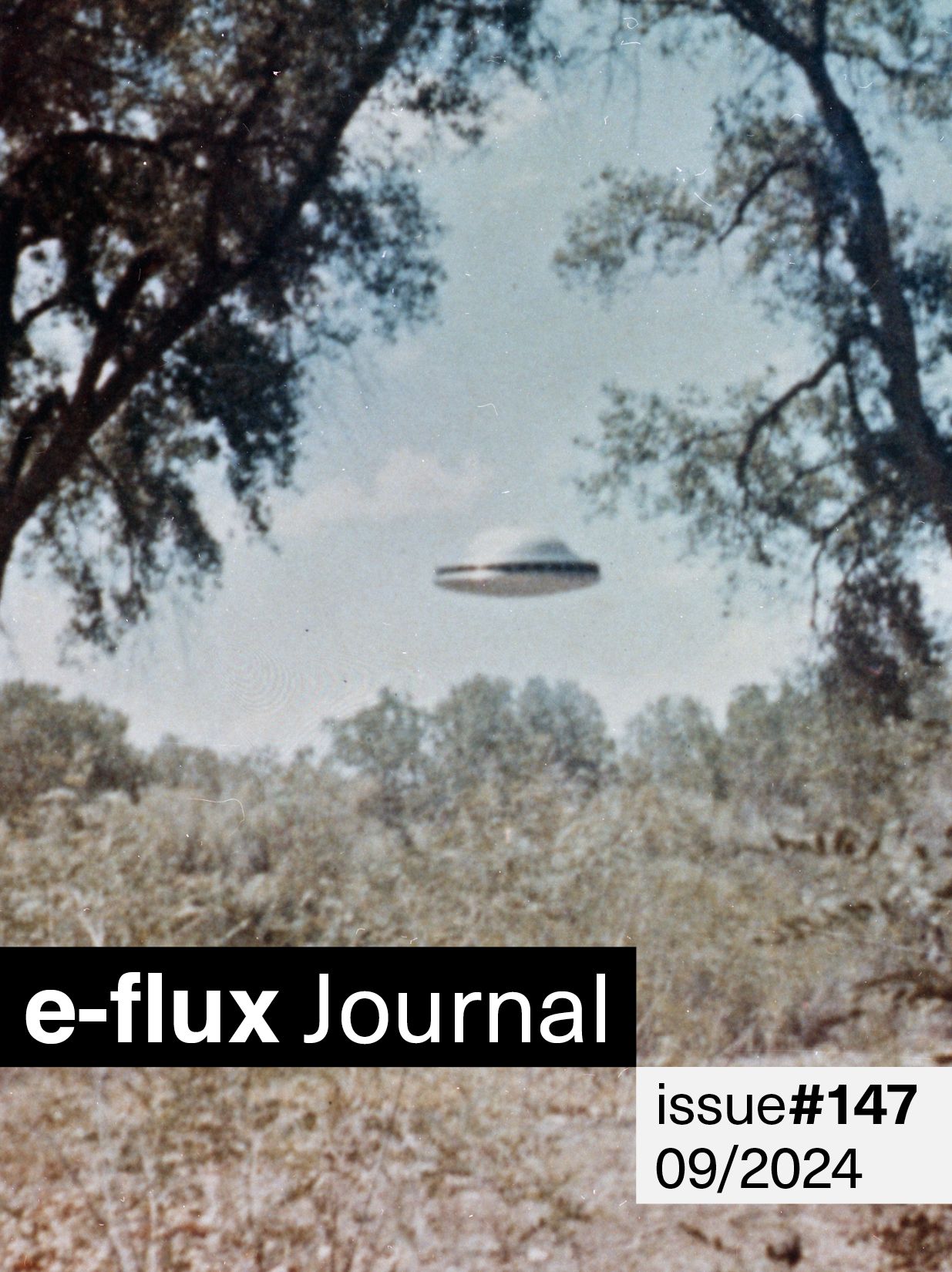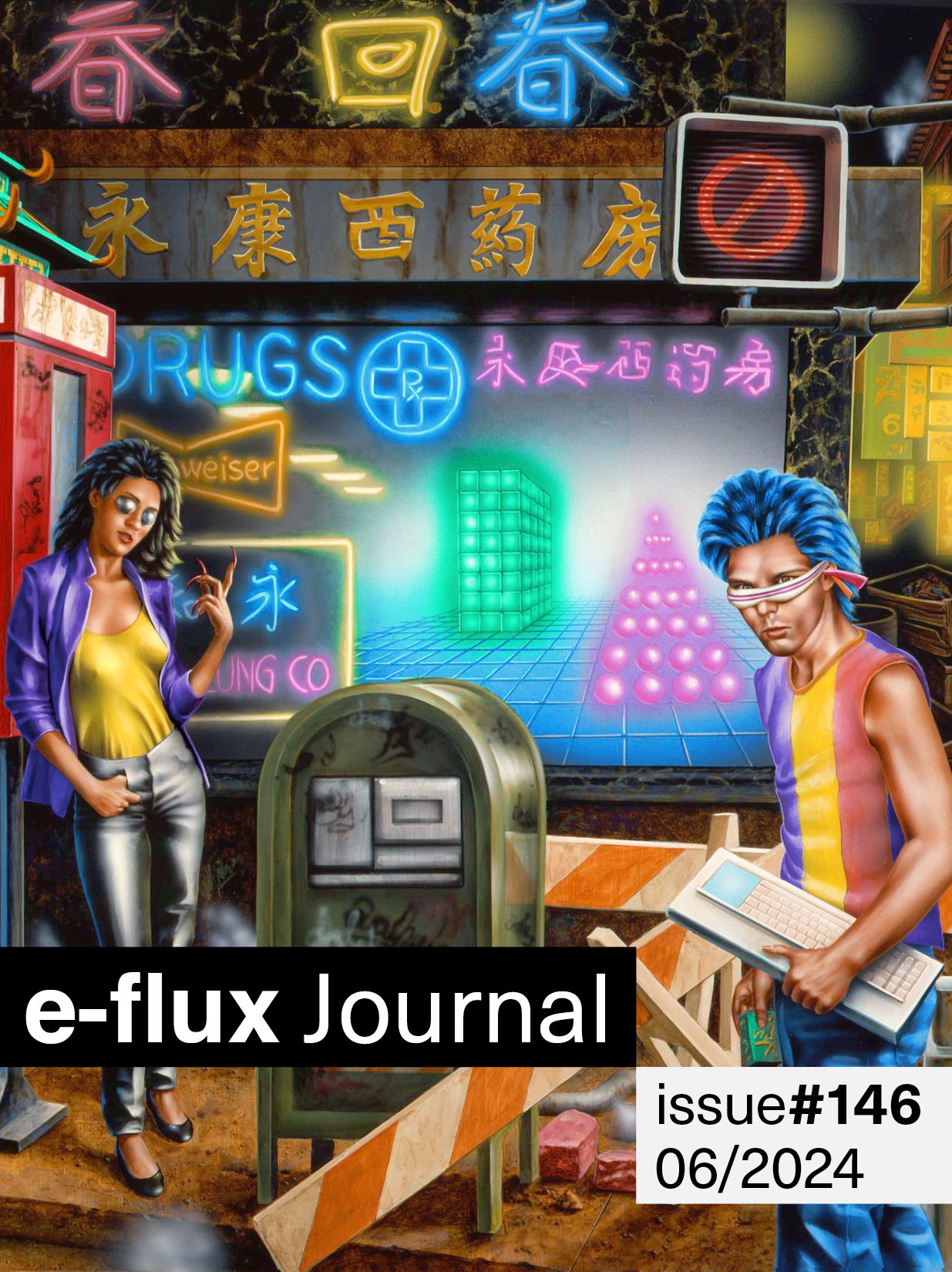e-flux journal issue 137
with Yuk Hui, Franco “Bifo” Berardi, Mary Walling Blackburn, Boris Groys, Akosua Adoma Owusu, Kwame Edwin Otu, Olga Rodríguez-Ulloa, Mijail Mitrovic, Otavio Leonidio, William Jamieson, and Fábio Zuker
Often it seems like we are facing so many endings that we can only be living in the end times—a self-annihilation whose inevitability even appears deliberate. From climate projection to daily news, much of the apocalyptic tone we encounter has an almost celebratory character, as if the end times were more of an ideological construction than a common observation. Certainly a lot of it is macho clickbait or political brinkmanship, and in some cases actual worlds ending. But it also carries a stranger imaginative character in the absence of any significant political imagination by traditional standards. Indeed, taken as a literary tool more than a documentary one, perhaps there is more to the end of the world than we thought.
Yuk Hui subtly reminds us that eschatology—the part of theology concerned with death and finality—is not necessarily a horseman signaling actual end times, but is merely a device for contemplating ultimate outcomes. As such, it is inherited from Abrahamic thinking, but is furthermore an imaginative device for projecting a final destiny from more immediate tendencies that might appear conflicting or illegible when taken on their own terms. Hui faces the fears surrounding ChatGPT, urging us toward a deeper understanding of artificial intelligence—in order to identify the imaginative leap we are being asked to make.
Franco “Bifo” Berardi also turns toward artificial intelligence. Here he takes on the cognitive automaton, networks of AI capable of autonomous decisions—potentially including the one to eliminate the obstacle of their human progenitors. According to Bifo’s analysis, the alignment of AI with human values is a delusion. Instead, humans will need to align themselves with the values and capabilities of intelligent machines.
A book-review poem by Mary Walling Blackburn uses Bambi in its myriad forms—cinematic and literary—to explore how gender and soft power touch. “Together, we flay Bambi,” begins the text, as an invitation and a promise (even a threat?). Marguerite Duras claims that literary criticism kills the book it aims to describe. Can the review stalk and quash trauma too?
In a future where immortality is achieved through cryogenization, Ilya Gordon, a senior curator at the State Museum of Immortality, grapples with the responsibility of preserving the personalities of the resurrected via aesthetics. Boris Groys tells his story. When a private sponsor offers financial support to create environments that keep the personalities of the deceased intact, Ilya becomes entangled with malign interests. In a post-religious society, Gordon’s suspicions are aroused with the sudden appearance in his museum of old Dutch and German masters’ paintings of tortured saints.
Reluctantly Queer, a short film directed by Akosua Adoma Owusu, follows the longings of a young Ghanaian man who has migrated to the United States. The film centers on a letter to his mother, read over images of the young man in his apartment—sometimes with a lover, sometimes alone. Presented in this issue, the letter addresses the racial and sexual challenges he faces in both countries, neither of which promise him the safe embrace of all the true selves with whom he walks through the world.
Olga Rodríguez-Ulloa’s manifesto—fragmented, displaced, hopeful—explores the term “chola” and its haunted, powerful echoes in the Andean region. The manifesto aims to unearth a silenced past, digging up long and previously whitewashed histories to reclaim and embrace a fuller chola subjectivity, acknowledging the threat it poses to coloniality, patriarchy, and individualism.
In the 1970s and ’80s, writes Mijail Mitrovic, Latin American art critics sought to develop a theory that would address the region’s cultural identity and overcome enforced dependencies on the First World. Mexican art historian Rita Eder and Peruvian critic Mirko Lauer proposed a “Social Theory of Art” (STA) as an alternative to both dependency and difference, focusing on “the socioeconomic and ideological determinations of the plastic object.”
Meanwhile, looking into a similar era, Otavio Leonidio begins an unwritten history of performance art in Brazil. Starting with two young artists disrupting—on tiny bicycles—a Rio performance by John Cage of his famous silent minutes and seconds, Leonidio charts a tendency that continues today, of Brazilian artists misappropriating their expected, limited place as a non-Western avant-garde.
Sand, as a resource, is essential for construction and land reclamation projects, with Singapore being its largest per capita importer due to constant urban expansion. William Jamieson digs up the extent of the environmental degradation associated with sand dredging, the geopolitics of the sand trade, and the impacts of sand mining. Jamieson also sheds light on the artist Charles Lim, who uses sand and sediment as a means to investigate Singapore’s territorial expansion and the manipulation of the sea-state.
In light of this summer’s ongoing wildfires, Fábio Zuker’s message about the interconnectedness of fire and authoritarianism is particularly inescapable. We are now in the Pyrocene, a geological age characterized by the uncontrolled use of fire caused by human activity. Zuker argues that the use of fire as a tool for power, along with our reliance on fossil fuels, has led to the erosion of democracy alongside the emergence of new authoritarianisms, particularly in Brazil, but also anywhere else that uncontrollable flames and their debris touch down.
—Editors
Yuk Hui—ChatGPT, or the Eschatology of Machines
Today’s humans fail to dream. If the dream of flight led to the invention of the airplane, now we have intensifying nightmares of machines. Ultimately, both techno-optimism (in the form of transhumanism) and cultural pessimism meet in their projection of an apocalyptic end.
Franco “Bifo” Berardi—The Completion
Two parallel world histories are unfolding, with ubiquitous but still disparate points of intersection: the history of geopolitical, environmental, and mental chaos on the one hand, and the history of the automatic order that is extensively concatenating on the other. Will it always be like this, or will a short circuit happen in which chaos takes over the automaton? Or will the automaton rid itself of chaos, eliminating the human agent?
Mary Walling Blackburn—The deer, when it is tired
Back in the late ’80s, after the wrap-up of both Bambis, Natalya Bondarchuk relays that the animal doubles of the human actors were donated to the child survivors of the Chernobyl meltdown. In my head, I draw a misshapen map of the USSR; motion lines trace the relocation sites of irradiated children and the forever homes of the animal stars. But what of tonight’s nuclear battlefield? Is there a functional live webcam out there in the Zone of Alienation where I can tune into a shaking spider secreting a skewed lattice of sunlit gossamer strands—its bright irregular warp indicating persistent mutations in her body? Might I spy, with jaundiced, remote eye, the spider eating her own web? After a trauma-feed, she’s full (again) on her own distortions.
Boris Groys—Curating Immortality
It was only natural that hope for survival was directed towards the museum system. After all, like art objects, humans are only particular material bodies, which can be kept intact and/or repaired and restored if necessary. The State took over the function that had earlier been fulfilled by God and Church. The State was not only responsible for the well-being of the living population but also for its immortality. This care was delegated to the curators.
Akosua Adoma Owusu and Kwame Edwin Otu—Reluctantly Queer
I wish there was a better way to articulate this to you, but life for a Black man is uneasy.
Olga Rodríguez-Ulloa—Sadistic Chola Manifesto
We intuited that as cholas we were already a threat to the system. We were illegitimate, yet we would prevail.
Mijail Mitrovic—Between Two Latin Americanisms: The Social Theory of Art (1975–86)
The object to be investigated here is no longer Latin American identity or cultural dependence, but the socioeconomic and ideological determinations of the plastic object. The premises have changed.
Otavio Leonidio—Non-Western Avant-Gardes: A Misappropriation
In the face of these predicaments, it seems that countless non-Western avant-garde artists have been confronted with a sort of Hobson’s Choice: either reject the specific sites and roles that have been assigned to them by Western critics, curators, and institutions, or else renounce them and be integrated into The Contemporary.
William Jamieson—Extracting Sovereignty: Land Reclamation in Southeast Asia and the Emergence of the Global Sand Crisis
Kalyanee Mam’s film throws sand in the gears of the global city, marking the asymmetry between its curated artifice and the remote terraqueous landscapes this curation predates upon, unsettling the ground on which the city-state projects its most delirious fictions of sovereignty through stolen sediment.
Fábio Zuker—Ashes to Ashes: On Combustion and Tyranny
Once again, we find ourselves facing the fallout of the democracy-led energy-supply model developed in nineteenth-century England, in which vast tracts of land were destroyed, subjected to violence, processes of degradation, and excessive toxicity in the name of energy production, whether in the form of fossil fuels or grain with a high protein content. The Western model of democracy has created sacrificial landscapes where both concepts—landscapes and democracy alike—may be sacrificed to wildfire.


